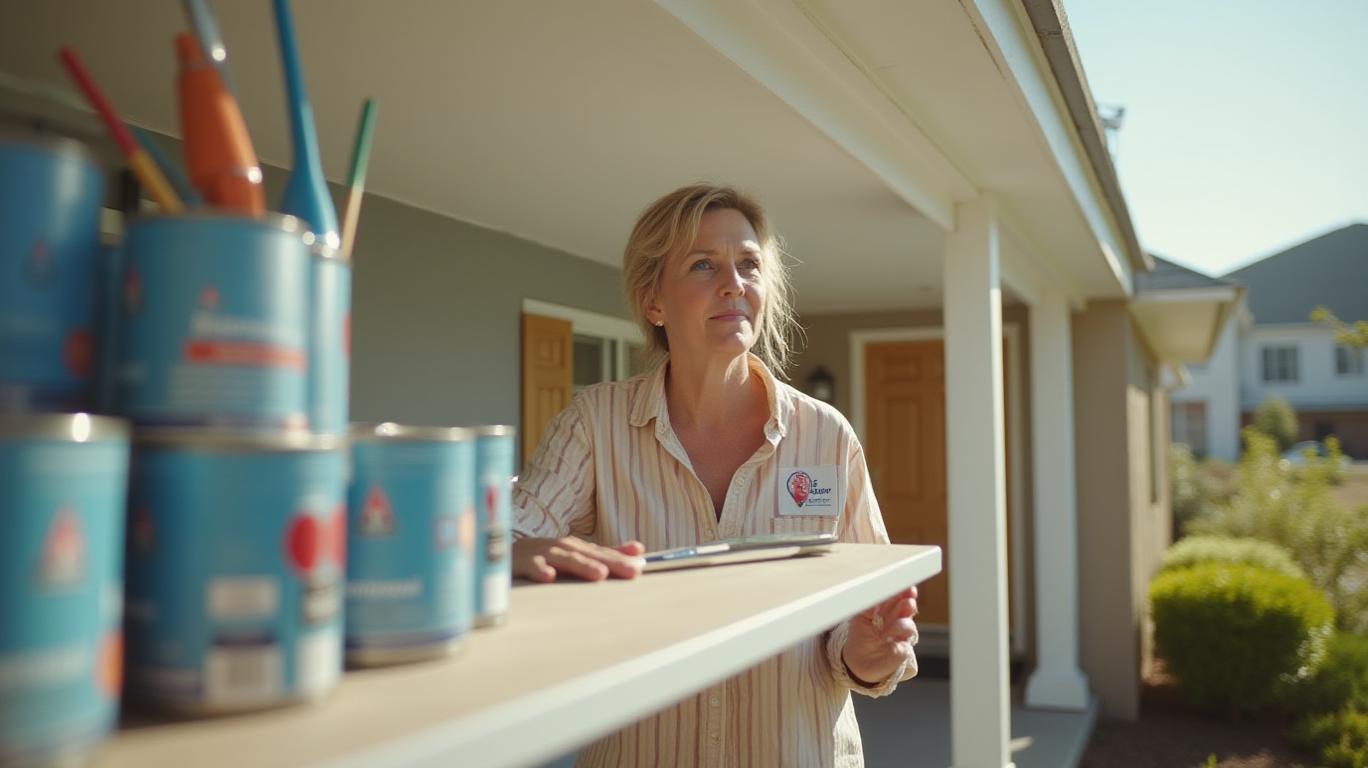Sherwin-Williams: Navigating Mixed Markets with Resilience and Ambition
Sherwin-Williams (SHW), the U.S. paint and coatings industry leader, has entered 2025 with a mix of challenges and opportunities. Recent earnings results and analyst forecasts reveal a company leveraging pricing power and operational discipline to navigate soft demand in key segments while positioning itself for long-term growth. Here’s what investors need to know.

Q1 2025: Earnings Beat Amid Revenue Softness
Sherwin-Williams reported first-quarter 2025 adjusted earnings per share (EPS) of $2.25, surpassing estimates of $2.16, driven by margin expansion and pricing hikes in its core Paint Stores Group (PSG). However, total revenue dipped 1.1% to $5.31 billion, missing expectations due to declines in the Consumer Brands Group (CBG) (-6%) and Performance Coatings Group (PCG) (-4.8%).
The PSG, which accounts for 55% of revenue, grew 2.3% to $2.94 billion, fueled by mid-single-digit price increases and strong demand from professional contractors and residential repaint projects. CEO Heidi Petz emphasized the segment’s resilience: “Our PSG team continues to execute well in a challenging environment.”
Yet, the CBG, which relies on DIY demand, faced headwinds from weak consumer spending and currency pressures in Latin America. Similarly, the PCG, serving industrial and automotive markets, struggled with global demand weakness and currency effects.
Analyst Forecasts: A Range of Views
Analysts remain divided, with price targets spanning $242 to $450, reflecting differing views on near-term risks and long-term potential.
- Bullish Case:
- Morgan Stanley ($450 target) highlights operational leverage and share repurchases as growth catalysts. The firm notes Sherwin-Williams’ ability to raise prices (up 3.4% in 2024) while maintaining margins.
RBC Capital ($446 target) points to PSG’s dominance (4,791 stores globally) and innovation in eco-friendly products as competitive advantages.
Bearish Concerns:
- Weak DIY Demand: The CBG’s 6% sales drop in Q1 2025 underscores reliance on housing market recovery, which remains uncertain.
- Global Slowdown: The PCG’s struggles highlight risks from sluggish industrial activity and trade tensions.
The median target of $400 (as of late 2024) suggests a cautious bullish consensus, with upside potential if PSG growth offsets segment declines and cost discipline sustains margins.
Key Drivers and Risks
- Market Resilience:
- PSG’s Pricing Power: The segment’s 9.7% profit growth to $541 million (18.4% margin) reflects effective cost control and pricing strategies.
Housing Market: A rebound in U.S. housing starts (currently at a 1.3M annual pace, below the 10-year average) could boost demand for paints.
Margin Sustainability:
Adjusted EBITDA rose 4.6% to $937 million, aided by lower raw material costs and operational efficiency. However, tariffs on applicators and pigments remain a drag.
Balance Sheet:
- Debt stands at $7.8 billion, down from $8.1 billion in 2024, but the debt-to-equity ratio (291%) raises concerns about leverage.
- The company returned $552 million to shareholders in Q1 via dividends and buybacks, signaling confidence in cash flow.
Data in Focus
SHW’s shares rose 5% post-Q1 earnings to $356, reversing a 4.9% YTD decline and outperforming the broader market. Adjusted EPS grew 3.7% year-over-year, aligning with its $11.65–$12.05 full-year 2025 guidance.
Conclusion: A Stock for Patient Investors
Sherwin-Williams’ Q1 results underscore its ability to thrive even as some segments lag. While bulls see $400+ potential if the PSG continues its strong performance and housing recovers, bears caution against overexposure to cyclical risks.
Investors should weigh:
- Upside: PSG’s dominance, pricing power, and a $400 median target imply ~15% upside from current levels.
- Downside: Weak DIY demand, global industrial slowdowns, and a high debt load could limit gains.
The stock’s P/E ratio of 34x reflects optimism, but execution on margin and housing recovery will be critical. For now,
appears Hold-rated, with upside contingent on macroeconomic improvements.In a sector where resilience matters most, SHW’s fundamentals suggest it’s a survivor—but not yet a standout.

Comments
No comments yet